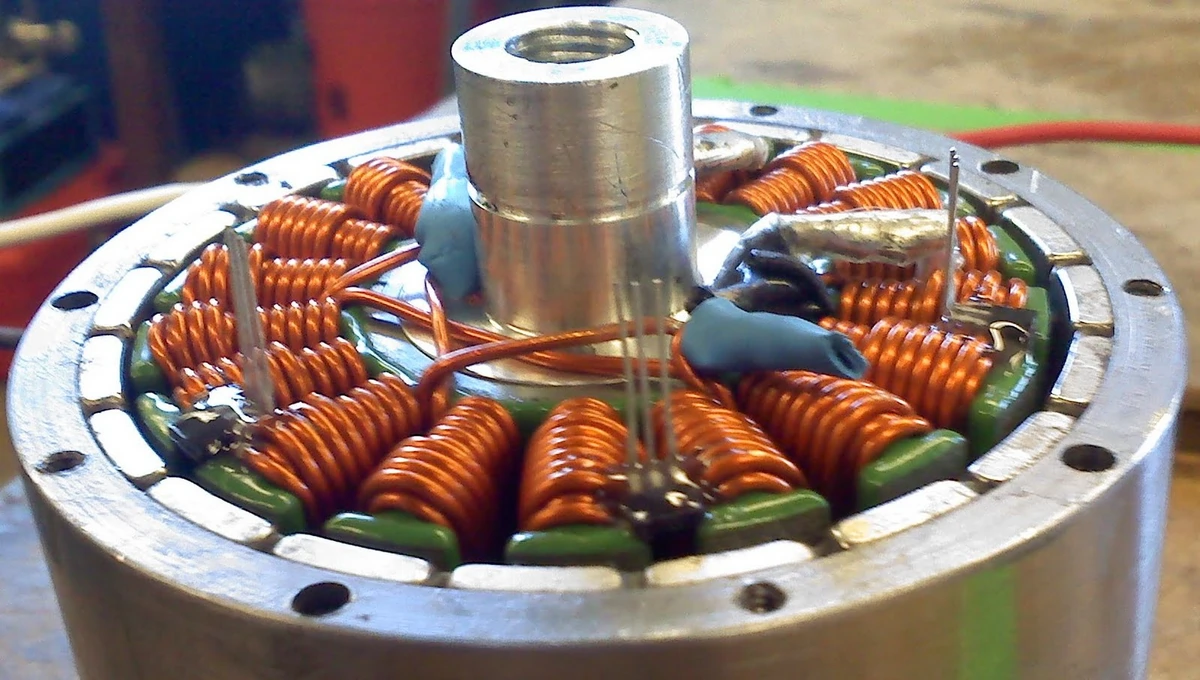BLDC motor hall sensor
2024-07-08 16:33:00
Brushless DC motors are widely used in many precision medical devices and industrial equipment due to their high efficiency, excellent torque characteristics, and long service life. A pivotal component in the control systems of these motors is the Hall sensor. It can significantly enhance the performance of the motor through precise commutation positioning and speed feedback mechanisms. This article provides a comprehensive analysis of the role of Hall sensors in BLDC motors, detailing their function, importance, and impact on motor performance.
Understanding Hall Sensors in BLDC Motors
The Role of Hall Sensors
The essence of a BLDC motor's efficiency and performance lies in its electronic commutation system, which requires precise timing to switch current through the stator's coils. Hall sensors in BLDC motors are critical for the electronic commutation process. These sensors detect the position of the rotor's magnets relative to the stator coils, providing real-time feedback necessary for the precise switching of the motor phases. By providing real-time data on the rotor's position, Hall sensors enable the motor's control unit to precisely time the switching of current. This not only ensures optimal magnetic interaction between the stator and rotor but also maximizes torque generation while minimizing energy consumption.

How Hall Sensors Work
A Hall sensor operates on the principle of the Hall effect, where a voltage difference is generated across an electrical conductor when subjected to a perpendicular magnetic field, providing a means to detect magnetic field strength and direction. In the context of BLDC motors, Hall sensors are placed in proximity to the rotor. As the rotor rotates, the magnets pass by the Hall sensors, which then generate voltage pulses that correspond to the changing magnetic field. These pulses are interpreted by the motor controller to determine the exact position of the rotor.
Function of Hall Sensors
Speed Measurement and Control
The rotational speed of a BLDC motor is a derivative of the frequency at which the rotor's magnetic poles pass by the Hall sensors. By counting these events over time, the control system can accurately determine the motor's speed. This measurement is critical for applications requiring precise speed control, allowing the system to adjust the power supply to the motor for speed regulation. Whether in a high-speed industrial centrifuge or in the precise positioning of a robotic arm, the Hall sensor facilitates unmatched control over motor operation.
Direction Detection and Reversal
Another advantage of Hall sensors in BLDC motors is their ability to detect the direction of rotor movement. This feature is particularly useful in applications requiring bidirectional motor control. By interpreting the sequence in which the rotor's magnetic poles pass the sensors, the control system can discern rotation direction and, if necessary, reverse it by changing the commutation sequence. This functionality broadens the scope of BLDC motor applications, enhancing their versatility.
Implementation of Hall Sensors in Motor Design
Placement and Configuration
Typically, a BLDC motor includes three Hall sensors, strategically positioned to sense the rotor's magnetic field as it rotates. This arrangement allows for a continuous update on the rotor's position at 120-degree intervals, providing the motor controller with the data needed to optimally time the phase changes in the motor windings.
Integration with Motor Controllers
The signals from the Hall sensors are fed into a motor controller, which processes these inputs to control the timing and sequence of power delivery to the motor's windings. This precise control is essential for maximizing the efficiency of the BLDC Motor, reducing energy losses, and improving the motor's torque and speed characteristics.
Advantages of Using Hall Sensors in BLDC Motors
- Precision Control: Hall sensors provide essential data that enable precise control over motor commutation, crucial for applications requiring high precision and repeatability.
- Enhanced Efficiency: Accurate rotor position feedback ensures optimal timing of phase changes, minimizing electrical losses and enhancing the motor's overall efficiency.
- Increased Reliability: Proper commutation reduces the mechanical stress on the motor, thereby enhancing its reliability and lifespan.
- Ease of Diagnostics: The digital nature of the signals from Hall sensors simplifies the diagnostics and troubleshooting processes, allowing for easier maintenance and fault detection.
Design Considerations for BLDC Motor Hall Sensors
Integrating Hall sensors into BLDC motors involves several critical design decisions:
- Sensor Placement and Number: The number and positioning of Hall sensors around the motor's stator are pivotal. Typically, three sensors are used, placed 120 degrees apart, to adequately cover the rotor's rotation cycle. This arrangement enables the continuous monitoring of rotor position.
- Signal Processing and Filtering: Hall sensor outputs require careful interpretation and filtering to reliably indicate rotor position. The motor's control unit typically includes algorithms to debounce the signal, ensuring accurate and stable motor control, even in the presence of environmental noise or minor sensor imperfections.
- Temperature Compensation: Since Hall effect sensors can be sensitive to temperature fluctuations, incorporating temperature compensation mechanisms or choosing sensors with built-in compensation can be crucial in maintaining their accuracy under varying operational conditions.
Challenges and Considerations
- Sensitivity to External Magnetic Fields: Hall sensors can be affected by external magnetic fields, which may lead to erroneous rotor position readings.
- Physical Placement: Incorrect placement of Hall sensors can result in inaccurate sensing, underscoring the need for precise mechanical design.
- Environmental Factors: Temperature variations and mechanical vibrations can affect the performance of Hall sensors, necessitating robust sensor design and placement strategies.
Conclusion
Hall sensors are indispensable components in the design and operation of BLDC motors, providing critical feedback necessary for efficient and reliable motor control. By enabling precise rotor position detection, Hall sensors facilitate optimal motor performance, enhancing the efficiency, reliability, and control accuracy of BLDC motors.
See What Lunyee Can Do For You
Contact Us
- 8619149417743
- +86-0371-5562 0274
- [email protected]
- Zhengzhou, Henan Province, China
- Mon-Fri: 9:00 - 18:00




